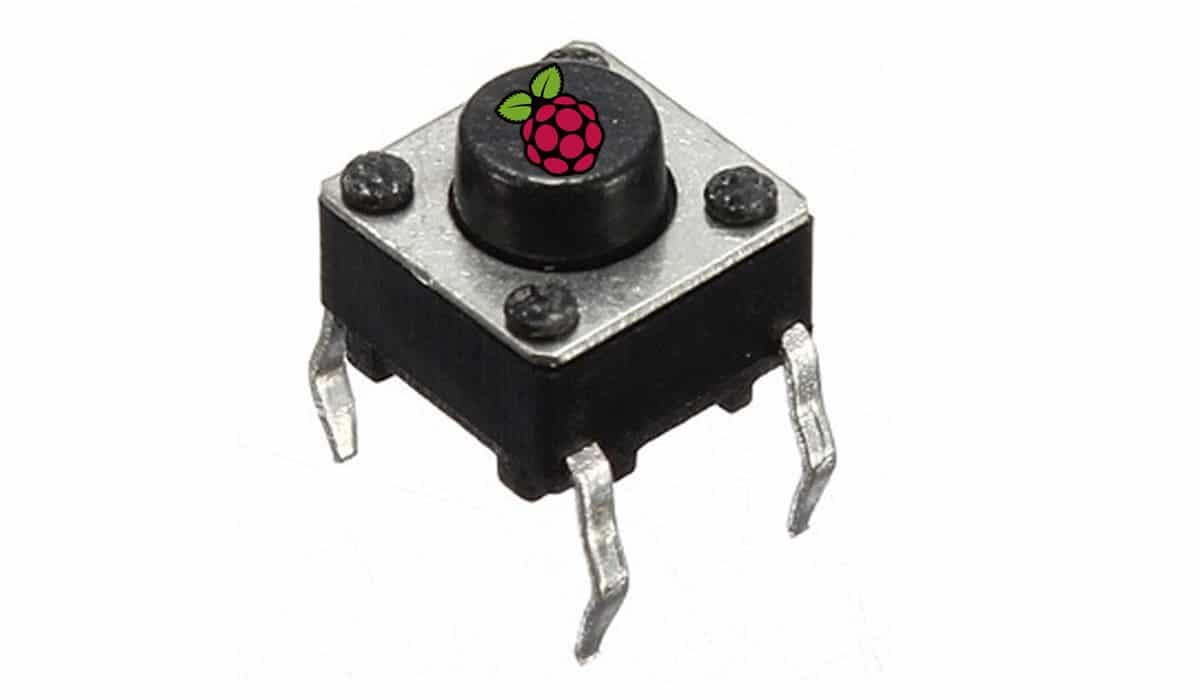
Switch buttons are very simple electronics component. They have simple internal circuit connecting electrically a first PIN with a second PIN on button pression.
Switch button usually have a very low internal resistance. For this reason people usually connect a reading PIN through button to ground instead of reading a positive voltage PIN: in last case you should use resistors to protect your read PIN from current failures.
In its internal circuit, opposite PINs work together, while button pushing creates circuit cross-connection:
This is a bit confusing some people imaging a simple push button with only 2 PIN (instead of 4) connected at button pression.
That said, in this tutorial I’m going to show you how to use a switch button with a Raspberry PI with Python. I’m going to use a RPI Zero W, but this guide works also with other Raspberry PI boards.
As usual, I suggest adding from now to your favourite e-commerce shopping cart all the needed hardware, so that at the end you will be able to evaluate overall costs and decide if to continue with the project or remove them from the shopping cart. So, hardware will be only:
You can find many of this pieces (excluding Raspberry PI and micro SD card) in the good Elegoo kit, which also include other sensors tested in my blog.
Check hardware prices with following links:
Please find below wiring diagram. We use only 2 of 4 button PINS. One is connected to ground, the other to RPI PIN we’ll read to get button pushing. Note that LED longer PIN (positive) is connected to resistor, than RPI PIN that we’ll activate on button down by python script.
Please find below some pictures on cabling:
Start preparing Operating system for your PI. You can both use install Raspberry PI OS Lite tutorial (for a fast and headless setup, without monitor and keyboard) or install Raspberry PI OS Desktop tutorial (using its internal terminal).
Before starting, please make your OS updated. From terminal:
sudo apt update -y && sudo apt upgrade -yYou don’t need to install Python, as it is already installed in all Raspberry PI OS distros.
RPI.GPIO should be already installed (otherwise, you can get it installed with the command “sudo apt install python3-rpi.gpio”).
I saved my python script in a public area, so that you can download and use it without issues coming from copy-paste operations which could skip some chars (like “#” for comments). Get switch_button.py script from my download area directly in your RPI. From terminal
wget https://peppe8o.com/download/python/switch_button.pyPlease find script explaining below.
Before all, import required libraries:
import RPi.GPIO as GPIOWe associate PIN numbers to variables, for better management. ReadPIN is where we read button state. LedPIN is the one lighting on the LED
readPIN = 14
ledPIN = 15PINS are setup according to Broadcom naming convention. LedPIN is set to output, as it will drive current to LED. ReadPIN is set to read, as it will read from switch button. Istead of reading 1 (high voltage) when button is pressed, for a safer and simpler circuit we are working with inverted logic:
GPIO.setmode(GPIO.BCM)
GPIO.setup(ledPIN,GPIO.OUT)
GPIO.setup(readPIN,GPIO.IN, pull_up_down=GPIO.PUD_UP)Main program becomes really simple. Remember:
this means that ledPIN is always opposite to readPIN, which is implemented in our loop (try/while statements) with following code:
try:
while True:
GPIO.output(ledPIN,not(GPIO.input(readPIN)))Last lines intercept script interruption to send a screen warning of interruption and cleans GPIOs for a correct script ending:
except KeyboardInterrupt:
print('interrupted!')
GPIO.cleanup()Run python script with following command from terminal:
python3 switch_button.pyOn button released you will have your LED powered off:
When button is pressed, you will have your LED powered on:
Enjoy!
In this tutorial, we will use two Arduino Uno to demonstrate the Serial Peripheral Interface…
In this tutorial, we will be making an automatic irrigation system (AIS) with Arduino and…
This tutorial will show you how to use Python Virtual Environment with Raspberry PI computer…
This tutorial will show you how to get betting odds with Raspberry PI by using…
This tutorial will show you how to perform the backup of Raspberry PI (computer board)…
This tutorial will show you how to install Honeygain on a Raspberry PI computer board…